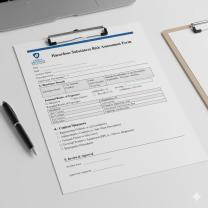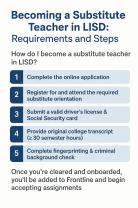What do you learn in a macroeconomics course?
A macroeconomics course covers the study of the overall economic system, focusing on aggregate phenomena and economic variables that characterize the performance of an entire economy. Here are the key topics typically covered in a macroeconomics course:
Introduction to Macroeconomics:
- Overview of the field of macroeconomics and its importance in understanding economic systems.
National Income Accounting:
- Measurement of economic performance, including gross domestic product (GDP), gross national product (GNP), and other indicators.
Economic Growth:
- The factors that contribute to long-term economic growth and the measurement of growth rates.
Unemployment:
- Analysis of different types of unemployment and the factors influencing the unemployment rate.
Inflation:
- Causes and consequences of inflation, as well as measures to control inflation.
Aggregate Demand and Supply:
- Understanding the concepts of aggregate demand and supply and their role in determining the overall output and price level in an economy.
Fiscal Policy:
- The role of government in managing the economy through fiscal policy, including taxation and government spending.
Monetary Policy:
- The role of the central bank in controlling the money supply, interest rates, and influencing economic activity.
Money and Banking:
- Functions of money, the role of commercial banks, and the operation of the banking system.
Exchange Rates and International Trade:
- The determination of exchange rates, balance of payments, and the impact of international trade on the economy.
Economic Indicators:
- Analysis of economic indicators such as consumer price index (CPI), producer price index (PPI), and leading economic indicators.
Multiplier Effect:
- Understanding the multiplier effect and its role in amplifying the impact of changes in spending or investment.
Business Cycles:
- Examination of economic fluctuations, business cycles, and the factors influencing economic expansions and contractions.
Economic Policies:
- Evaluation of various economic policies, including monetary and fiscal policies, and their effectiveness in achieving economic goals.
Globalization and Macroeconomics:
- The impact of globalization on macroeconomic variables, trade, and financial markets.
Economic Development:
- Factors influencing economic development and the challenges faced by developing economies.
Economic Systems:
- Comparison of different economic systems, including market economies, planned economies, and mixed economies.
Economic Models:
- Introduction to economic models and their use in analyzing macroeconomic phenomena.
These topics collectively provide students with a comprehensive understanding of the key issues and dynamics that shape the overall performance of an economy. Macroeconomics courses often involve theoretical analysis, empirical studies, and practical applications to real-world economic situations.
What are the key topics covered in a typical macroeconomics course?
A typical macroeconomics course delves into the big picture of how an economy functions as a whole, examining factors like growth, inflation, unemployment, and government policies. Here are the key topics you'll likely encounter:
1. National Income and Output:
- Understanding concepts like Gross Domestic Product (GDP), Gross National Product (GNP), and National Income.
- Measuring economic growth and analyzing its determinants, such as investment, technological advancements, and population changes.
- Exploring fluctuations in aggregate output and the business cycle, including booms, recessions, and depressions.
2. Price Level and Inflation:
- Analyzing the factors that influence the overall price level in an economy, including monetary policy, fiscal policy, and energy prices.
- Understanding different types of inflation, such as demand-pull, cost-push, and imported inflation.
- Examining the consequences of inflation, such as its impact on purchasing power, income distribution, and economic stability.
3. Labor Market and Unemployment:
- Analyzing the factors that determine the level of unemployment, such as labor supply and demand, minimum wages, and technological changes.
- Exploring different types of unemployment, including frictional, structural, and cyclical unemployment.
- Evaluating government policies aimed at reducing unemployment, such as job training programs and unemployment benefits.
4. Money and Banking:
- Understanding the role of money in the economy and its various functions, such as medium of exchange, unit of account, and store of value.
- Exploring the structure of the banking system, the role of central banks, and how monetary policy affects economic activity.
- Analyzing how changes in the money supply influence inflation, interest rates, and investment decisions.
5. Fiscal Policy and Government Spending:
- Understanding the role of government spending and taxation in economic activity.
- Examining different types of fiscal policy tools, such as expansionary policies (increased spending or decreased taxes) and contractionary policies (decreased spending or increased taxes).
- Analyzing the impact of fiscal policy on aggregate demand, economic growth, and government budget deficits.
6. Open Economy:
- Exploring the interaction between an economy and the rest of the world, including international trade, foreign exchange markets, and international capital flows.
- Analyzing the impact of international trade on domestic production, employment, and the balance of payments.
- Assessing the implications of exchange rate fluctuations on international trade and investment decisions.
7. Economic Growth and Development:
- Examining the long-run determinants of economic growth, such as human capital, physical capital, technological advancements, and institutional factors.
- Comparing economic growth patterns across different countries and regions.
- Exploring issues related to economic development, poverty reduction, and sustainable development.
Additional Topics:
- Depending on the specific course and instructor, additional topics might include:
- Behavioral economics and its impact on economic decision-making.
- Environmental economics and the relationship between economic activity and the environment.
- Game theory and strategic interaction in economic contexts.
Overall, a macroeconomics course equips you with the tools to understand and analyze the complex forces that shape economic outcomes at the national and global level. It provides a critical foundation for informed decision-making in government, business, and personal finance.
Do you have any specific questions about any of these topics or are you interested in learning more about a particular aspect of macroeconomics? I'm happy to provide further information.












